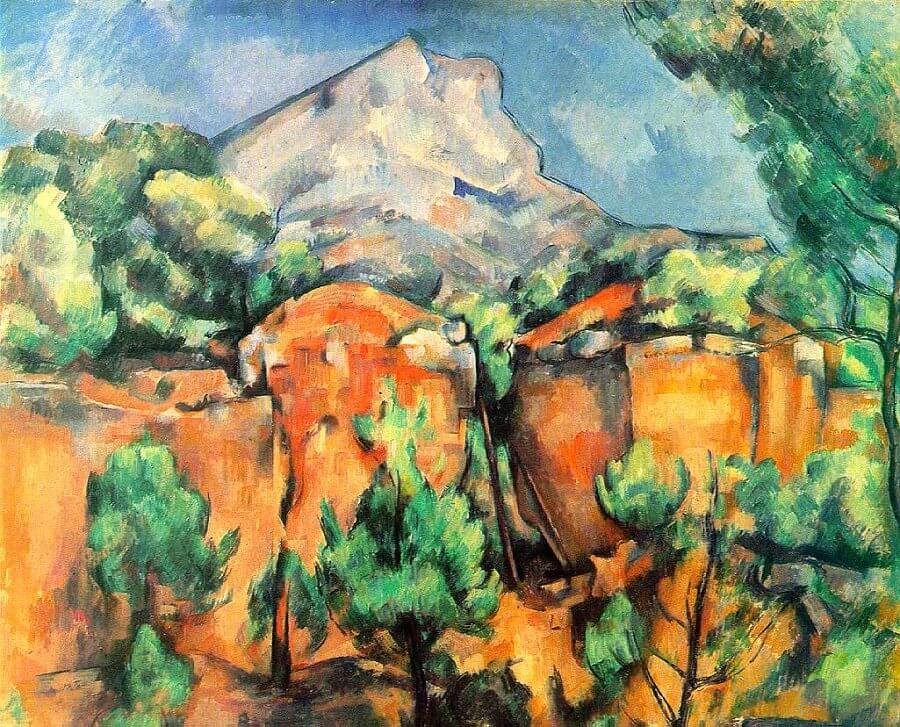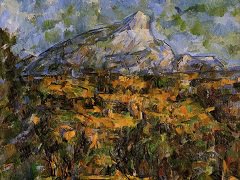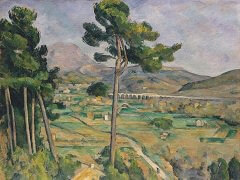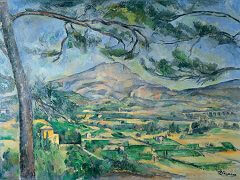Mont Sainte-Victoire seen from the Bibemus Quarry, 1897 by Paul Cezanne

In the earlier pictures of Mont Sainte-Victoire, the mountain was seen at a considerable distance, and its place in the broad panorama gave it a greater repose. Here, Cezanne comes closer to the peak; but it is even more inaccessible than before. Instead of suspending the observer above the valley, he places between him and the main object an abyss, the quarry across whose void he views the opposite rocks and the rising peak. In this process, the landscape itself has become dramatic, filled with striving, titanic energies; but these are outside the spectator's realm, beyond approach. The mountain, like a heroic sculpture, is set on a gigantic pedestal of rock enclosed by trees. One side rises in a sheer unbroken slope, the other, a strangely animated line, changes its course in several abrupt breaks. For the first time we see the peak as a personal object with a distinct profile, or with two sides, like a human face. It has lost the old classic symmetry and has become a complex, dynamic form. At the same time, its elevation, its strained upward movement, is more pronounced because of its position in space - close to the upper edge of the canvas and directly above the vertical walls of the quarry. There is no broad horizontal plane, no immense platform of earth, to tranquillize the natural pyramid, but a deep vertical cleft at its convex base, splitting the quarry wall in two and marked by unstable, tilted trunks, adds to the restless effect in this setting of great pressures and heat.
The taste for the vertical plane, which we have observed in the Louvre still life as typical for the late style, is realized in this landscape with a grandiose force, but with another expressive sense. The mountain is as distinct as the nearest objects, even more distinct if we compare its drawn outline with the vaguer (sometimes vanishing) silhouettes of the trees below. As we move from the foreground to the distance, the objects become larger, as in a primitive emotional perspective. The great mass of the tree at the upper right seems to belong to the same region of space as the mountain, and only when we follow the wavy line of its trunk along the edge of the canvas do we recognize its true place in the foreground. Very similar greens occur in the foreground and distance, uniting their far-separated planes in a common scheme of accents. The strongest contrasting chord, the orange rocks and blue sky, also binds the most distant space and the nearest. A scale of lavender, rose, and purple tones extends across the same depth. As in the still lifes, this closer view is associated with a greater intensity of sensation. There are few landscapes before Cezanne in which orange and blue are applied in such large, luminous contrast.














